What’s the buzziest buzzword of the modern gaming generation? Some may say 4K. Others would tell you it’s ray tracing, subscription service, or maybe even photogrammetry.
But what about “accessibility”? We see the word used a lot and it can mean different things depending on the project. Sometimes it’s something as ubiquitous as subtitles, other times it means a total rethinking of what a video game controller can be and do.
With Until You Fall, Schell Games set out to make a more accessible virtual reality title. That’s no small feat, and the endeavor sparked my curiosity. How does one make such a demanding and often bulky platform like VR more accessible?
I spoke to Schell Games’ VP of design Harley Baldwin and Director of Product Management Alexis Miller on what accessibility means not just to the team’s sword-fighting VR game but what it means to the whole industry, and what it could — and should — mean in the future.
Their responses made for some of the most thoughtful perspectives on the subject that I’ve ever read and I was thrilled to be a small part of the conversation. I hope you appreciate it as I did.
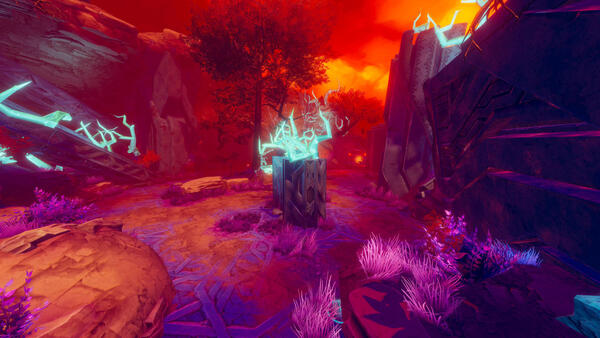
GameSkinny: Until You Fall’s recent patch adds several accessibility features that help people suffering from photosensitivity, those who need more of a guided hand in the levels, and even lefties like me. Were these a result of player requests or your own team’s desire to make a more accessible VR game?
Alexis: I’d say both. Our understanding of the problems, especially the photosensitivity and handedness, came from player feedback.
The culture at Schell Games around accessibility helped to raise the priority of these issues into features that were actually implemented. We’re working to create accessibility tools so we can be more proactive in finding solutions to accessibility needs, but recognize that many of these features are a natural fit for our game to be enjoyable and comfortable for more players.
Harley: I think it was a mix. Certainly there have been people on the team and in the company advocating for us to think about accessibility generally, and there have also been people within the company sharing how accessibility changes could help them as gamers.
Seeing what the community’s requests are is always an important piece of how we decide what features to implement, and we’ve been fortunate to have an active community with lots of feedback.
GS: The patch also addresses in-game text, allowing for color coding. From a development standpoint, why do you think many games struggle at launch to offer adequate text options? It seems to be a regular bullet point in patch notes for games of all sorts.
Alexis: I know that all development teams are faced with a list of features that everyone would love to do, but it just doesn’t fit the scope or schedule. These are the toughest decisions.
With the approach we’re starting to take, we hope that if accessibility goals are considered in the pre-production phase, then the solutions are more likely to be baked into those initial features instead of being an afterthought that requires rework or a patch release later. It’s not always possible though.
Harley: First, for VR development, it’s easy to forget that many people find reading and comprehension difficult in VR. There are a lot of reasons for this issue, from ill-adjusted headsets exacerbating minor eye alignment issues to lack of room for glasses to a common hyper-situational-awareness that leads to guests’ brains being halfway to fight or flight mode.
Even when teams are aware that reading is a challenge in VR, they can be surprised at the level at which their initial attempts to overcome fall flat. That is to say, VR is a profoundly different space, one that can magnify our differences, and the challenge of meeting a basic usability bar for something like reading is deeper and more complex than ever before.
It’s also true that for me, as a designer, VR, especially in early access, is a place where design process and accessibility thinking really compliment each other. We focus first on ensuring that people understand their options moment-to-moment, and most early playtesting is trying to illuminate how we can better serve players in that very tight time loop.
Then we pop up in time, looking at the 5 minute loop, then the 15, etc. Eventually, you’re going after the 20+ hour experience, and that takes a lot of playtime, data, and unblocking issues you’ve found in the earlier time loops. That’s a time consuming process.
Eventually, you get to the point where you are ready to start layering in conceptual supports to systems that are matured – and that’s when most teams realize that a big part of that conceptual support is readability, the emphasizing and grouping concepts with color coding, that kind of thing. Doing that before your systems and content are mature can actually impede that healthy design early process, because you might emphasize something that twists the way guests think of a tool or concept.
That’s the way it worked for us, anyway. Once we had those mature systems, we were able to clearly see the concepts that needed more textual attention to improve that long-term comprehension.
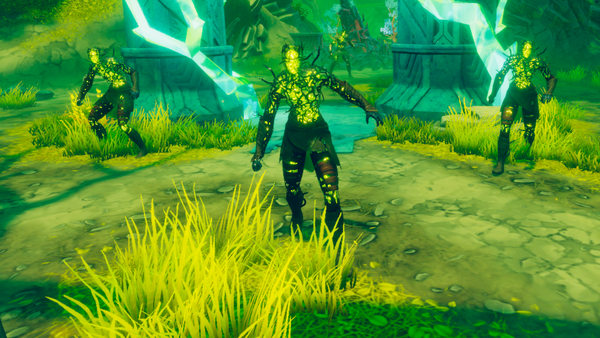
GS: Accessibility has been a popular trend over the last few years and thankfully it seems to still be ramping up. What other accessibility options might you add to Until You Fall?
Alexis: One thing that we continue to tweak is the colors used for visual cues. We’ve heard feedback from players not being able to see important visual cues due to low color contrasts and players being overwhelmed by certain visual cues that have a high color contrast or flash.
We’ll continue to listen to our community and see what comes up. We want to have greater accessibility throughout the lifecycle of the game and not just, “hey, this is our accessibility release.”
Harley: Adding support for new platforms, which we are working on now, is also an accessibility add for us, from a holistic perspective. New platforms bring new audiences with new needs.
It’s exciting for us to see what those opportunities look like, for sure. And we continue to hear from our existing community about things that would be helpful to them; we’re always triaging and discussing those issues and looking for ideas about how to address them.
GS: Making VR accessible seems like a unique issue given its mobility demands. Are there any accessibility features which you hope to add but haven’t found a way to implement yet?
Alexis: It’s absolutely true. VR accessibility needs can be very different from a console, PC, or mobile video game.
One of our accessibility goals is that players can comfortably play without repetitive, uncomfortable, sustained, or precise movements. It is something that could make a game awesome for players with different levels of dexterity or mobility, but that same feature or adjustment to the game could make the game really boring for other players.
We have discussed this topic and not found a one-size-fits-all solution, but we’re still mindful of this goal, even without having a major feature to address it.
Harley: We’ve experimented with Subtitle systems, which is actually more challenging than it sounds. There are a surprising variety of ways in which subtitles can collide with other accessibility issues in VR to create an unfriendly experience.
We’re working it out, but it’s been trickier than one would think for such a “simple” feature.
GS: What have Until You Fall’s accessibility settings taught you about how you’ll work on future projects?
Alexis: It’s not just adding settings. We’ve learned that the earlier in the process that the team is aware of accessibility needs and goals, the easier it is to make them part of the overall game design up front and part of the early prioritization that happens with game features.
Many accessibility solutions truthfully make the game better for everyone, so a setting may not always be needed. We’re also working to share lessons learned across projects and teams at Schell Games, so that these kinds of features can be done faster and easier over time and each team isn’t starting from scratch.
Harley: Not just with Until You Fall, but with all our VR products, we’re discovering anew every time how important it is to establish accessibility goals at the beginning. The difference really comes down to how you design your initial approach.
A commitment to meeting an accessibility goal in the beginning can be baked into your designs, and transparent to everyone whether they need it or not. A late accessibility addition is much more likely to be a costly standalone feature and also more likely to add awkwardness to the experience for everyone.
As a company, VR mobility accessibility is kind of baked into our DNA. If you think about it, the initial inspiration for I Expect You To Die was a VR mobility/accessibility question. We looked at the state of the art, where people were getting simsick all the time with virtual movement, and we said “what if movement weren’t a need?” and I Expect You To Die, this stationary escape room puzzler, was born.
Then we got into development of our first prototype and some people playing it said “it’s hard for me to reach, to grab. I feel limited.” And so we added telekinesis to solve that problem, and suddenly we’d opened up the whole room to everyone – now our puzzles could exist both close up, in the hand-mind space, and at distance, so everyone could play in the fully embodied fantasy.
Similarly, we added seated play to Until You Fall early on – long before we even opened it up to Early Access. We knew that if we waited, we’d make decisions about gameplay that irreversibly made addressing mobility issues difficult.
We have a similar approach regarding single-handedness to all our products, because we view dual handedness as a mobility challenge. We playtest early builds looking for places where we’re requiring both hands, and think about options where those things are concerned.
This early testing can have a massive effect on our approach. For example, in our upcoming HistoryMaker VR product, early one-handedness testing revealed that we’d made a UI best suited to dual handed play. The team took that data back and completely revamped the UI to enable one-handed play, and they were able to serve the goal very well because they made an early decision that it was important to the product.
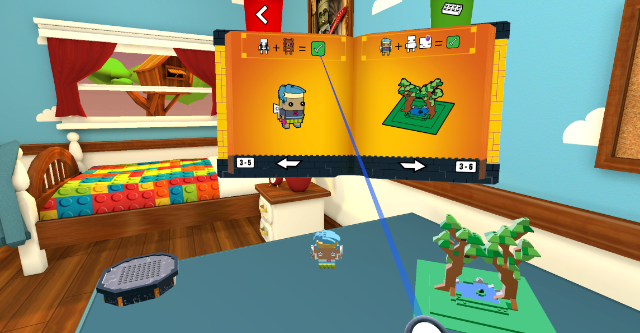
GS: This isn’t your first VR game and previously you’ve even made VR games for kids. Can you talk about the unique accessibility options studios must keep in mind when developing VR games for younger audiences?
Alexis: We started out trying to come up with a list of “easy wins” for accessibility, but stopped going in that direction precisely because we recognized that the accessibility needs and solutions vary so greatly between different game platforms and audiences, including for younger audiences. One big difference is that kids process information differently and usually have slower reflexes than adults.
Another big thing is their height. While creating a VR game for middle school students recently, the wide range of heights even within students the same age was pretty dramatic. The best thing to do is to let a diverse range of players play your game as much as possible and to keep a really open mind about how they will experience your game.
Harley: Well the first thing that comes to mind is height. Kids can be a lot shorter than adults, obviously, and that can have real implications when you’re talking about play in a world that is made of object affordance rather than symbols of objects.
Another is the hardware itself – VR headsets are made for adults, and that difference in head size can make it hard for kids to adjust the headset for themselves. We actually include instructions on how to troubleshoot this problem in our educational products meant for kids.
A fun one that always makes me smile is destructibility. Kids can get really excited to learn the limits of a world and system by breaking it, because they’re often not allowed to do that in real space. So we often find ourselves leaning into supporting those explorations that kids want to do — examples are the breakable glass in HoloLAB Champions and making throwable tardigrades in Water Bears VR.
That kind of destructo-play-enabling thinking even made it into I Expect You To Die — you can set all the books in the office on fire if you want.
Obviously, there’s a larger range of reading mastery in kids, so we either limit or support reading with grade level analyzers. We recently added a dyslexic-friendly font to an upcoming product (HistoryMaker VR) to ensure that dyslexic kids were able to import and use their own scripts.
With adolescents, we have seen that some kids really struggle with the blind performance aspect of being in VR — that hyper-social awareness — which should be a familiar feeling for any of us who have gone through adolescence.
We added a “buddy” system to help, so that you can always either have a friend running the cameras and being the person you’re performing to, or you can opt out of the headset, be the buddy, and still get to contribute to the experience. I was really pleased and amazed with the team that they saw the problem and designed in a solution.
Another one is that kids are likely to encounter VR in schools and they may come from a much wider techno-background than your average VR player base.
We’ve found that while kids are often quicker to pick up the usability details than adults, we must be careful not to make assumptions about whether they’ve had past experiences they can draw on to make sense of the product. Things like button languages and universal game rules don’t exist for this group in the same way they would for a group of adults who have decided to purchase a particular VR system.
Finally, any group of kids might also include guests with every other accessibility need we’ve come across. Making sure that we do what we can to include them is also a base design assumption we work with.
GS: What do you think the future of VR looks like regarding things like form factor and accessibility? How long until a headset is simply a pair of inconspicuous glasses?
Alexis: In order to appeal to more players, VR has to be more accessible, comfortable, and easy to use. Its survival relies on it.
Most VR headsets can still feel very intimidating — pricey gadgets requiring adjustments to fit comfortably and to see and hear clearly, while also not tripping over your dog. I think there will be more advances in controllers than headsets in the near future.
I’m excited about the future with added physical sensations to the experience, like feeling pressure on your fingers and hands as you handle objects in VR. Inconspicuous glasses (or better yet, contacts?) for the consumer market feels at least 4-5 years out.
Harley: Inconspicuous is an interesting thought experiment. Will they be inconspicuous because they look like the glasses on my face today, or will they be inconspicuous because so many people wear them that they become an invisible accessory, like glasses? I think the latter.
A super interesting question to me is the question of controller form factors and VR hands.
VR hands started in the same place that a baby’s hands start in terms of development — just that open/close of all the fingers in the classic “palm grip” that babies learn first. Then we moved to the “mitten grip”, where the thumb could be a separate entity and give a bit more control. That led to the thumb-forefinger grip, where we can simulate picking things up in the self-feeding behavior that kids master at around one year.
So right now, we’re essentially all toddlers in VR.
I think that controller development is going to continue reflecting human hand development, because ontogeny recapitulates phylogeny seems to be as true in VR as it is in biology. Is that going to be a controller that affects and reflects individual movement and pressure of the fingers and wrist, or is it going to be some kind of hand-tracking system?
I’m not sure, but I think that the one that lets us master the next developmental step is the one likely to get the most traction.
GS: What about as a business? It still seems like VR is niche. Will it ever lose that quality and if so, what will be the driving force to make it more popular?
Alexis: I don’t think there is one silver bullet to make VR more popular.
As with all consumer technology, I think the key driving forces will be price, variety, and ease of use: a reasonable price for VR headsets, a wide variety of high quality games that appeal to more people than just one core demographic, and a headset that is actually easy for the common person to use.
Those are a lot of obstacles to overcome, but they are definitely being tackled across the industry. I see inspiration from other technology industries like the vacuuming robot, which have become surprisingly commonplace.
Harley: Games. Games! Games!!! They’ve been the key to every household digital revolution and I think they will continue to be. We’re seeing big growth in the VR game community now, and I think that will continue as well.
Things that will drive that growth: accessibility, especially universal accessibility thinking that encourages games for headsets that we can just pop on when we’re ready. Cordlessness is a game changer, for sure. Removing the friction involved in getting in and out will grow the market.
Focusing on VR first content, abandoning screenspace gaming conventions that don’t work for the medium, making sure that there is a healthy ecosystem of experiences for a diverse guest market, these are all small parts of the bigger whole.
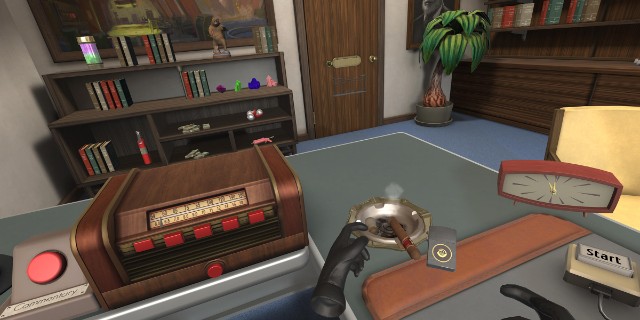
GS: How do you view the relationship between game difficulty and accessibility? Should every game be playable by everyone, and if so, what do creators need to do to make that happen?
Alexis: It’s really easy to feel overwhelmed and say, “it’s not possible to make a game playable by everyone,” and just throw up your hands. Creators should think about it on a continuum.
Increasing accessibility, including various types of difficulty, makes your game enjoyable by more people. Who doesn’t want that? It’s not exclusively about making games enjoyable for people with disabilities. It’s not about adding every feature under the sun.
The important thing is to acknowledge the barriers that difficulty of a game can have on players enjoying your game, and to unpack some of the reasons why a player may label a game as “too hard” or “too easy.”
The key is that there are lots of different solutions to addressing game difficulty. There can be a lot of different changes made to give players more options while they are playing. That can include varying levels of difficulty to choose from, but can also mean giving players different ways to succeed in the game.
For example, in I Expect You to Die, a VR puzzle game, there are multiple solves in each level. While at the surface, this may not appear to address difficulty or accessibility, by providing the player with more than one option to solve the puzzle, you are smoothing the overall difficulty curve in a way that most players will not even realize.
Harley: The particular question of difficulty/accessibility is a super deep one in and of itself, without even invoking universal accessibility.
For example, Until You Fall is a hard game. We found that it needed to present substantive challenges at every level of difficulty to keep guests engaged and riding the edge of their own mastery, and for that reason we moved away from calling the first tier “easy.”
It’s also a resonant question for individual players — some have a sanguine attitude towards playing games on ‘easy’, some really struggle to see themselves as someone who ever would, even if they are still building skills.
What we found while thinking through these questions was that thinking of difficulty as a monolith wasn’t helpful. There are so many reasons someone might find the game hard, from stamina to understanding the ways the systems multiply to space available to play.
What we ended up doing was breaking down “difficulty” into a variety of reasons the game might be hard for someone and addressing them each separately — so some things, we realized we were making it harder without giving someone a way to master that, and we just fixed it for everyone.
And some things, the difficulty felt core to that experience of growing as a melee master, and so we broke those things out and made them part of the difficulty tiers.
GS: How has working through the pandemic affected your projects and team?
Alexis: We’ve gone from a culture where no one worked remotely to one where everyone is working remotely, so that was a shift that has impacted all of us. Like most people, when we started working from home, we initially thought it might just be a couple of weeks, but that feels laughable now.
Given the severity of this global crisis, teams have adjusted amazingly well. It hasn’t been easy, but everyone has been extremely flexible, patient, and caring in navigating the challenges and surprises that it brings. Projects that were installation-based have had to come up with new ways of doing their work.
Teams used to doing in-person playtesting have had to come up with new ways of doing remote playtesting. And of course family responsibilities continue to change daily, as parents were unexpectedly forced to become teachers and daycare providers for their kids, and spouse/partner work conditions and schedules change. And on and on.
There could be an entire article about all that has changed, but we’re lucky to be in such a supportive environment at Schell Games.
Harley: It’s been different for each project, for sure, depending on where they were in their cycle and what kinds of hardware challenges they had. Some projects were just finishing up, and were able to pretty smoothly transition to WFH and close the project out.
Other teams had to get really creative, as they were working with installation-type hardware in the studio that obviously, they couldn’t visit anymore. And everyone is impacted by increased family needs, from parents with kids suddenly at home to elder parents who needed more support in some way.
We’ve gotten used to seeing kids and cats pop up during meetings, and we’ve tried to be really cognizant that everyone is working under much more difficult circumstances than we were last year.
It’s put our agile bona-fides to the test, and I think we’ve come out stronger because we’ve stepped back, leaned on flexibility and innovative problem solving to meet those challenges. Our people have been fantastic in caring for each other and themselves and I couldn’t be prouder to be part of this company right now.
GS: As an educational game studio, have you considered making any games, perhaps for kids, about social distancing or other “new normal” practices?
Alexis: We have actually shifted scope on at least one client project due to this new norm, so it is impacting what we’re already working on.
In early April, we made several educational VR games for kids free in order to help families struggling with home schooling their kids during the quarantine.
We have also seen an increase in people using VR, including Until You Fall, as a motivating way to exercise indoors, so there are definitely new norms taking shape.
Harley: It has come up! There are so many opportunities to help, from education about social distance practices to supporting people who are struggling with isolation.
We recently made a number of our educational VR games free on the Steam store to help parents who are suddenly home-schooling their kids. We’ll continue to look for opportunities to serve our community with what we do best, and it looks likely that the pandemic will shape, at least in part, a number of those opportunities.
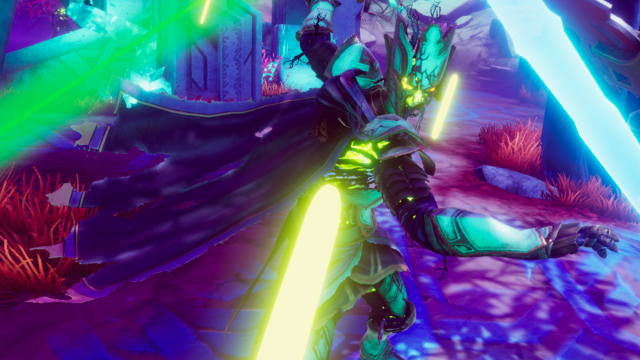
Again I’d like to thank Schell Games for diving so incredibly deep on this topic. You can learn more about Schell Games at the studio’s official website.

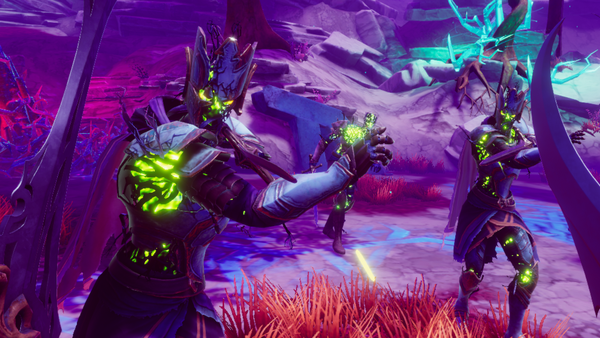





Published: Jun 4, 2020 07:31 pm